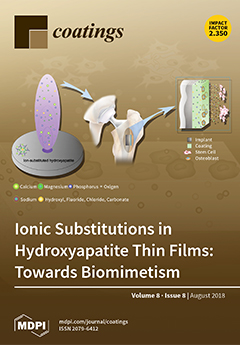In this work, we present a simple and efficient method for the preparation of hemin-modified SnO
2 films on Metglas ribbon substrates for the development of a sensitive magneto-electrochemical sensor for the determination of H
2O
2. The SnO
2 films were prepared at low temperatures, using a simple hydrothermal method, compatible with the Metglas surface. The SnO
2 film layer was fully characterized by X-ray Diffraction (XRD), Scanning Electron Microscopy (SEM), photoluminescence (PL) and Fourier Transform-Infrared spectroscopy (FT-IR). The properties of the films enable a high hemin loading to be achieved in a stable and functional way. The Hemin/SnO
2-Metglas system was simultaneously used as a working electrode (WE) for cyclic voltammetry (CV) measurements and as a magnetoelastic sensor excited by external coils, which drive it to resonance and interrogate it. The CV scans reveal direct reduction and oxidation of the immobilized hemin, as well as good electrocatalytic response for the reduction of H
2O
2. In addition, the magnetoelastic resonance (MR) technique allows the detection of any mass change during the electroreduction of H
2O
2 by the immobilized hemin on the Metglas surface. The experimental results revealed a mass increase on the sensor during the redox reaction, which was calculated to be 767 ng/μM. This behavior was not detected during the control experiment, where only the NaH
2PO
4 solution was present. The following results also showed a sensitive electrochemical sensor response linearly proportional to the concentration of H
2O
2 in the range 1 × 10
−6–72 × 10
−6 M, with a correlation coefficient of 0.987 and detection limit of 1.6 × 10
−7 M. Moreover, the Hemin/SnO
2-Metglas displayed a rapid response (30 s) to H
2O
2 and exhibits good stability, reproducibility and selectivity.
Full article





